Carl E. Olson's Blog, page 144
July 4, 2013
No Faith, No Freedom. Know Faith, Know Freedom.
The state of Maryland was the first experiment in religious
freedom in human history. Lord Baltimore and his Catholics were a long
march ahead of William Penn and his Quakers on what is now called the
path of progress. That the first religious toleration ever granted in
the world was granted by Roman Catholics is one of those little
informing details with which our Victorian histories did not exactly
teem." — G. K. Chesterton, What I Saw in America
"Where
society is so organized as to reduce arbitrarily or even suppress the
sphere in which freedom is legitimately exercised, the result is that
the life of society becomes progressively disorganized and goes into
decline." — Bl. John Paul II, Centesimus Annus, 25.
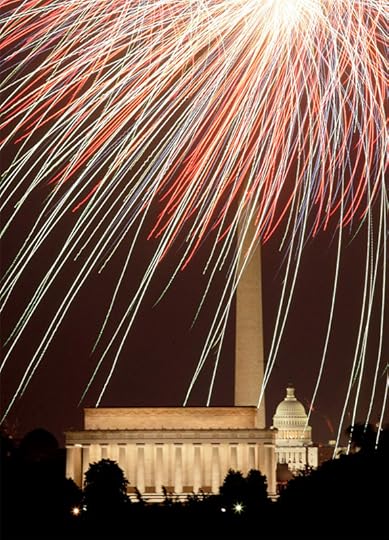
"But
freedom attains its full development only by accepting the truth. In a
world without truth, freedom loses its foundation and man is exposed to
the violence of passion and to manipulation, both open and hidden." —
Bl. John Paul II, Centesimus Annus, 46.
Today is
Independence Day in the United States, a day marked by celebrations
large and loud, festive and familial. The word of the day, the defining
characteristic of the celebration of the signing and adoption of the
Declaration of Independence on July 4, 1776, is "freedom". Today also
marks the conclusion of the second "Fortnight of Freedom", which
commenced on June 21st, the vigil of the Feast of St. John Fisher and
St. Thomas More. It should give pause, if for only a moment, that the
"Fortnight" began on the feast day of two English martyrs and then ends
on the National Day commemorating the 237th anniversary of a declaration
of independence from the rule of Great Britain. Among other things, it
speaks to the fact that while religious freedom has a special place in
the history of the United States—see the quote above from
Chesterton—that freedom is catholic, something that all men and women
should enjoy, even though so many throughout the world do not. It also
speaks to the special relationship between Catholicism and freedom, a
relationship little understood and rarely acknowledged in a country
whose historical and cultural foundation was largely Protestant in
nature.
And what of today? In thinking of today, specifically
and in the broader sense of the current age, it is notable that Pope
Francis will tomorrow release his first encyclical, Lumen Fidei
("The Light of Faith"), which is reported to be the joint work of
Francis and Benedict XVI. Rather than coincidental, the timing is
fortuitous. That fact hit home when, in the process of cleaning my
office yesterday, I re-discovered a book about the relationship between
freedom and faith, written by an English scholar (my office usually has
several stacks of books, each with 20 or 30 books, so such "discoveries"
are hardly unusual). Several passages caught my attention, but I'll
share just a couple of them. Bypassing the context for a moment, here's
the first passage:
The
confidence in state action, the glorification of technology, the
unlimited faith in science, the centralization of decision, and the
subordination of low to so-called mass interests—all these … have helped
in the West to create communities in which the individual citizens
feels overwhelmed, isolated, and helpless before the anonymities of
public and private bureaucracy. We are right to fear these vast
distortions of tendencies already at work in our society.
It is a
fine summation of the broad (and deep) problems faced today, yet it is
not original. Except that it was written, not in the past few years, but
over sixty years ago, in the the early 1950s. The book is Faith and Freedom,
the author was Barbara Ward, and the publisher was Image; the subhead
is: "A stimulating inquiry into the history and relationship of
political freedom and religious faith." It is a book worth tracking down
for many reasons, among them Ward's beautiful and learned writing, the
historical perspective presented, and the philosophical insights, which
are just as meaningful today, if not more so, than there were when the
book was first published in England in 1954.
Ward has some
interesting things to say about the War for Independence and the
founding of the United States, but I am more interested here in her
thoughts on dealing with and fighting against tyranny.
Democracy, the Death of Truth, and the Growth of Tyranny
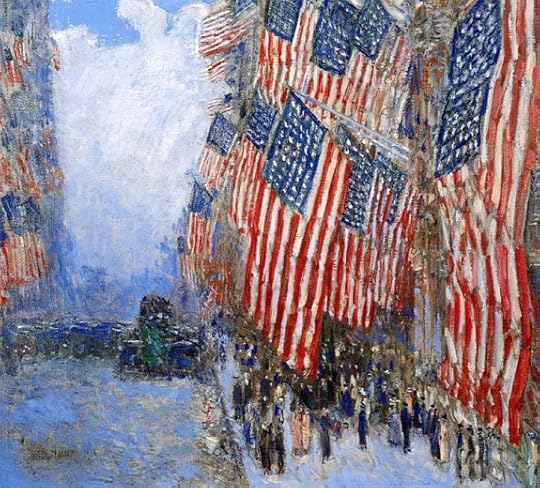
Democracy, the Death of Truth, and the Growth of Tyranny | Brian Jones | CWR
Choosing to live according to one’s own self-made conception of reality, human nature, and happiness is a recipe for tyranny.
My wife
recently had a discussion with a former high school friend of hers
regarding the Gosnell abortion trial in Philadelphia. They were in
complete agreement that what this so-called “doctor” had done was
intentionally taking the lives of innocent children, discarding these
little souls as though they were mere things, capable of being
disposed at will. However, it was also clear that my wife's friend,
admitting the truth of these horrors, was hesitant, perhaps even
unwilling, to carry the premises to their logical conclusion. His
final remark was this brief summation of his philosophical worldview:
I agree with you
that this case (Gosnell) is quite disturbing on so many levels. I
would never want my wife to have an abortion, nor would I ever
conceive of counseling a woman that abortion would be a wise choice.
However, I must declare my agnosticism on this issue, for I
personally do not know when human life begins and I am not certain
that the science is definitive on this point either. Furthermore,
while I may disagree with the person’s decision, nevertheless, who
am I to deny someone the sacred right of choice to determine what is
best for them in their lives, and in the complicated circumstances
that envelope their situation?
While much can be said, and has been
said, about the claims put forth in such a statement, what should
stand out most is that this is the philosophical outlook of modern
liberal democracy, its penultimate truism on which it is based and
feeds. Relativism and toleration are its paradigmatic doctrines, for
if one proposed some form of truth and and also proposed that we
could simultaneously know this truth that we ourselves did not make,
then one would be a threat to civilization. It is only on the
conditions of dialogue, equality, and the affirmation of any and all
forms of living that we can remain a free and open society, one
progressing towards a better world.
Cardinal Joseph Ratzinger himself
diagnosed this dangerous current of philosophical relativism in
modern democratic societies. Democracy, Ratzginer noted, is in fact
built upon the basis,
that no one can
presume to know the true way, and it is enriched by the fact that all
roads are mutually recognized as fragments of the effort toward that
which is better... A system of freedom ought to be essentially a
system of positions that are connected with one another because they
are relative as well as being dependent on historical situations open
to new developments. Therefore a liberal society would be a
relativist society: only with that condition could it continue to be
free and open to the future. (“Address to Latin American Bishops”,
1996).
Ratzinger rightly highlights in this
same address that there must be a certain amount of relativism in the
arena of politics for, as Aristotle tells us, this science is not
speculative, but practical.
July 3, 2013
Two Cheers for Democracy
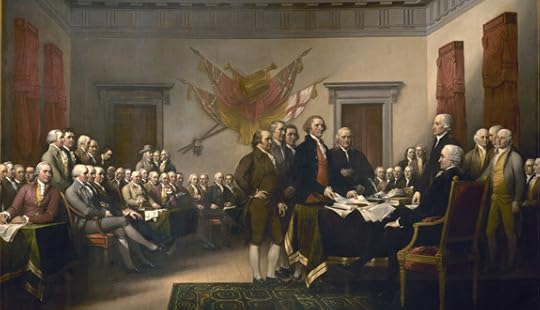
Two Cheers for Democracy | Benjamin Wiker | CWR
Patriotic, modest, and tempered praise for our present form of government
Happy
237th birthday, America! Two cheers for democracy!
Why
only two? Aren’t we supposed to cheer wildly for democracy as unambiguously
good? Don’t we have a moral obligation to hold up democracy as the best—indeed,
the only legitimate—form of government? Isn’t it the only form of government
that expresses the fundamental moral and theological truth that all human
beings are equal, have equal dignity, are equally children of God, have equal
rights, and all of the other equal things anyone can think of?
Well,
certainly if I were running for political office, I would have to cheer for
democracy with unbridled exuberance. I would have to say something like, “Three
cheers for democracy?!—no, make that a hundred!”
And if
the other candidate suggested that two cheers might be more modestly
appropriate, then I’d win hands down. “Two cheers, you say? This man is a totalitarian,
a bigot, an enemy of the common man. I think we see who is for the people, and who is against.”
Then
I’d be cheered wildly, and get elected in a landslide.
But
I’m not running for office, so it’s a lot easier to speak the truth.
If we
recognize the humor in that last comment (even if only as sarcasm, the lowest
end of the humor spectrum), then we realize, in part, why we might consider
giving only two cheers for democracy.
We
realize that, all too often, trying to get elected means bending one’s message
to the popular ear, trying to make oneself salable, making use of the exact
same techniques as ad agencies use to sell Coke and deodorant, manipulating the
masses through slick ads, mud-slinging ads, mawkishly patriotic ads,
disingenuous ads.
Getting
elected means telling people what they want to hear, rather than telling them
the truth about the actual political situation. So that those who flatter and
fawn, who look the best, speak the best, are able to rouse the most passion,
are the ones who get elected—rather than those who might actually be able to do
the best job.
What
if the actual best person to be our president were a short, shy, dumpy, bald
guy with a biggish nose and crooked teeth, who spoke with a squeaky stutter?
Would he get elected?
The Problematic Legacy of Fr. Hesburgh
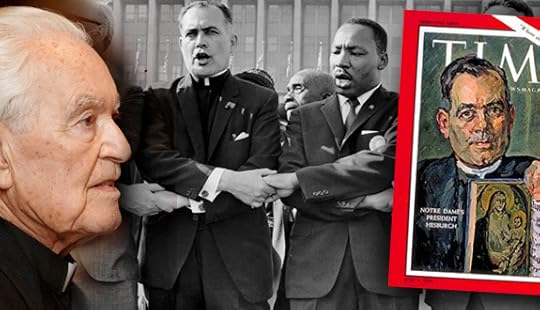
The Problematic Legacy of Fr. Hesburgh | Anne Hendershott | CWR
A beloved leader in Catholic higher education, he also accelerated the move toward secularization of Catholic institutions.
Standing in front of a famous
1964 photo of Father Theodore Hesburgh locking arms with the Rev. Martin Luther
King, Nancy Pelosi, the House minority leader, honored Father Hesburgh at a
party on Capitol Hill celebrating the retired president of the University of
Notre Dame’s 96th birthday in late May.
During her celebratory remarks, Pelosi praised Father Hesburgh’s
courageous record on civil rights and pointed to the photo, on loan from the
National Portrait Gallery, taken at a rally just days after a vote on the Civil
Rights Act. Pelosi was joined at the party
by dozens of congressional well-wishers—as well as Vice President Joe Biden—all
paying tribute to the priest that Biden described as “the most powerful
unelected official this nation has ever seen.”
Biden is correct. Father Hesburgh has indeed exerted a powerful
influence on our country, on our Church, and especially on our Catholic
colleges and universities. He has
received 150 honorary degrees, the most ever awarded to one person, and has
held 16 presidential appointments involving most of the major social issues in
his time—including civil rights, nuclear disarmament, population, the
environment, Third World development, and amnesty and immigration reform. In
July 2000, President Clinton awarded Father Hesburgh the Congressional Gold Medal—making him the first person
from higher education to be so honored.
Father Hesburgh has always viewed
himself as a “citizen of the world” and his secular activities reflect
that. Father Hesburgh was the first priest ever elected
to the Board of Directors at Harvard University and served two years as
president of the Harvard Board. He also
served as a director of the Chase Manhattan Bank. A longtime champion of
nuclear disarmament, Father Hesburgh has served on the board
of the United States Institute of Peace and helped organize a meeting of
scientists and representative leaders of six faith traditions who called for
the elimination of nuclear weapons.
On many occasions, Father Hesburgh found himself the first
Catholic priest to serve in a given leadership position on boards of secular
organizations. Much of his success can
be viewed as stemming from his ability to distance himself from the authority
of the Church. Such was the case during
the years he served as a trustee, and later, Chairman of the Board of the
Rockefeller Foundation, a frequent funder of causes counter to Church
teachings—including population control.
Some of Father Hesburgh’s activities are
curiously missing from the Notre Dame website’s formal
biography of their beloved president emeritus.
Zombies Are Not Fast (But They Can Be Boring)

A review of World War Z,
a movie about zombies that is not interested in zombies. | Nick Olszyk | Catholic World Report
MPAA Rating, PG-13
USCCB Rating, A-III
Reel Rating, 
 (2 out of five)
(2 out of five)
Zombies are among the
greatest MacGuffins in contemporary literature and cinema. Any
thoughtful examination of the subject of the living dead leads
nowhere, but zombies can be a stand-in for any number of important
social issues including immigration, natural disasters, and even
romantic tension (see Warm Bodies).
Zombie movies generally fall
into two categories: scary thrillers only interested in seeing
screaming teenagers killed in horrific ways or thoughtful
examinations about society and human nature. World War Z wants
to be in the second category but tries to also placate those who like
the first. As a result, neither is fully realized. Its attempt to say
something productive about life and death is compromised by the
repetitive need to show millions of CGI zombies attacking people.
World War Z makes zombies boring.
Gerry Lane (Brad Pitt) is a
modern day Cincinnatus who once fought third-world conflicts for the
United Nations and now makes pancakes every day for his kids while
his loving wife brings home the bacon. Then the zombie apocalypse
breaks out in terrifying fashion. Gerry’s training comes in handy
as his family fights its way through Philadelphia until they are
rescued and brought to safety on aircraft carrier in the Atlantic (it
is usually assumed that zombies cannot swim).
His family’s lodging comes
at a price; Gerry must travel around the world looking for the origin
of the outbreak in order to make a vaccine. As Gerry chases down
answers from South Korea to Israel to Wales, he is continually
pursued and attacked by zombies. The amount of actual time taken to
move the plot forward is minuscule and many interesting facets of
this story are overlooked in the service of pure, adrenaline-laced
action. The film ends with a discovery that provides humanity with a
sliver of hope but does not solve the seemingly endless problem.
For most of a person’s
life, he assumes that tomorrow will come; safety is the rule, not the
exception. Yet for those who have experienced a serious illness or
been in a significant car accident, an understanding comes of the
truth: death is a possibility at every moment and eternity is much
longer than our lifespan. Jesus explained this by saying, “there
will be two men in a field. One will be taken, the other left.”
World War Z does a good job of demonstrating this sobering
fact. The scientist Dr. Fassbach states that “mother nature is a
serial killer” and explains that the Spanish flu killed nearly 3%
of the world’s population in two years.
Yet all of these
apocalyptic scenarios never ultimately come true.
July 2, 2013
The Introduction to "The Miracle of Father Kapaun"
The Introduction to The Miracle of Father Kapaun: Priest, Soldier and Korean War Hero | Roy
Wenzl
Some
people regard the meek man as one who will not put up a fight for
anything but will let others run over him. . . . In fact from human
experience we know that to accomplish anything good a person must
make an effort; and making an effort is putting up a fight against
the obstacles. — Father
Emil Kapaun
Emil Kapaun is a rare man. The Vatican is
considering whether the priest deserves to be canonized a saint, and
the president of the United States is pondering whether the soldier
is worthy of the Congressional Medal of Honor.
[Editor's note: Since the publication of The Miracle of Father Kapaun, President Obama awarded the Congressional Medal of Honor posthumously to Fr. Kapaun.]
There was
nothing remarkable about Emil Kapaun’s childhood or early manhood
to suggest that he would become a Korean War hero and might someday
be declared a Catholic saint. He grew up on a farm in Kansas, where
he was born in the kitchen on April 20, 1916. His parents were pious
and hardworking, but so were lots of farmers in America’s
heartland.
Kapaun was a good student at the local public
school and later at an abbey high school and college, but with his
quiet and unassuming manner he did not stand out as exceptional. His
early priesthood and military chaplaincy were uneventful.
When
we began the research for Kapaun’s story, the chief investigator of
his cause for sainthood confided some concerns about his own work.
Rev. John Hotze had spent a decade investigating Kapaun for the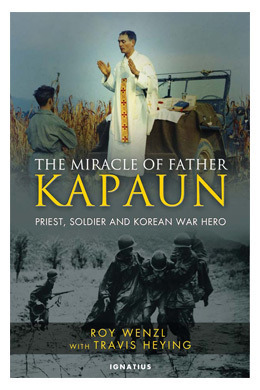
Vatican. He said one of the frustrating things about talking to
Kapaun’s Catholic supporters
is that many of them used clichés to describe
him—surrounding
the man’s actions with choirs of angels
singing
and playing harps: “He was such a holy man.”
Years ago,
some initial Church investigators appeared to
seek
the same type of descriptions when they questioned
Kapaun’s
fellow prisoners of war. They asked those survivors
of
North Korea’s POW camps whether Kapaun prayed fervently”
every day; whether he was “holy” at all times;
and
whether dying soldiers got up and walked immediately
after
Kapaun had laid his hands on them. Although the questions
irritated
Kapaun’s battle-scarred friends, they answered
them
politely enough.
The Kapaun these friends remembered, however,
was no
painted-plaster
saint. He was a regular guy. He did ordinary
things.
And he stank and looked dirty because the POWs
never
got to bathe.
Kapaun saved hundreds of lives, said Lt. Mike
Dowe, but
not
“by levitating himself two feet off the ground”. He did
practical
things, such as boiling water and picking lice—
tasks
that can seem small but that made a huge difference
for
malnourished and sick POWs. The mostly soft-spoken
man
had a temper, Dowe recalled, and he sometimes used
colorful
language to get his point across.
This gritty reality was just
the kind of thing Hotze intended
to
track down, he explained to us, as clichés would not do
the
job. Andrea Ambrosi, the Vatican investigator who helped
Hotze
prepare Kapaun’s documents for the Vatican, had told
him
that Rome wanted the real Kapaun—warts, rags and all.
The
job appealed to Hotze, a Wichita Diocese priest
who
tells good stories in his Sunday homilies. Hotze knew
that
many great saints down through the ages had been
bad
boys before their conversions. Paul and Augustine:
notorious.
Francis of Assisi: as fond of ladies as he was of
wining
and dining. Although not everyone makes a dramatic
180-degree
turn on his way to his best self, every
man
is in need of conversion; each one has weaknesses
and
has done things he regrets. Hotze thought the flawed
Kapaun
would be not only more believable, but more able
to
offer hope to those who struggle to overcome their
failings.
Hotze
gathered for the Vatican stories about Kapaun told
by
non-Catholic POWs—the Protestants, Jews, agnostics and
atheists
who had no qualms about relating the priest’s foibles.
And
so far, Rome has given Kapaun the title Servant
of
God, the first of four steps toward canonization.
Hotze’s
approach shaped the way we wrote our own story for
the Wichita
Eagle in
2009. We too wanted to show Kapaun
as
he really was.
This book is based on what Kapaun’s fellow
soldiers told
photographer
Travis Heying and me about the priest’s actions
in
the Korean War. Although we went in search of the real
man,
we nevertheless heard stories about Kapaun that
sounded
miraculous, and for newspaper reporters and editors,
the
miraculous creates challenges. What soldiers say
Kapaun
did is so heroic that it defies believability. He saved
hundreds
of lives, they say, while placing his own at risk.
How
could such a story be written credibly?
Travis and I began our
research by calling Dowe, Herb
Miller
and Kapaun’s other prisoner-of-war friends in June
2009.
We drove or flew all over the United States to talk
with
them. We saw firsthand that they had suffered deeply.
They are
still suffering. They choked up sometimes as they
told
us what they had experienced.
We admired these veterans, but
still we wondered whether
they
had embellished their stories over sixty years of steaks
and
beers at POW reunion banquets.
One thing that convinced us
that Kapaun’s friends were telling
us the truth was that they demanded we tell
the truth in
what we wrote about him. And we found consistency
between
what they said and the letters and recorded testimonies
that
the guys had given about Kapaun over the years.
Kapaun’s
friends do not consider themselves experts on
miracles,
but they know what they saw, and as far as they
are
concerned, the man himself was something like a miracle.
By
the time we talked to most of them, the secretary
of
the army and the chairman of the Joint Chiefs of Staff
had
learned enough about the already decorated U.S. Army
captain
to recommend him, posthumously, for the highest
military
honor in the United States. The Pentagon is in
the
business of declaring war heroes, not saints. But to
many
of Kapaun’s eyewitnesses, they amount to the same
thing.
One
of the striking things we learned about Kapaun was
how
little he said on any given day. In civilian life, as in
camp,
he listened more than he talked. He almost never
preached.
The chaplain did not even bring up the subject
of
prayer without permission.
On the march, Kapaun sometimes
didn’t bother to introduce
himself
to fellow soldiers as a chaplain or even as an
officer.
Instead he would throw himself into whatever task
they
were doing. And then, after the men saw him work
harder
than any other guy, he would ask whether there was
anything
more he could do for them, including praying with
them.
Some
soldiers didn’t care for chaplains, considering them
Holy
Joes who sermonized while grunts did the dirty work.
But
they liked Kapaun a lot, and one reason was that he
made
himself one of them. His way of witnessing Jesus was
to
spare the platitudes and dig foxholes or latrines alongside
sweating
soldiers.
Another reason the men liked Kapaun was that he
treated
everyone
with respect. He showed Protestants, Jews, Muslims
and
nonbelievers the same kindness he bestowed on
Catholics.
Kapaun’s friends said this quality stuck out because
many
people, even many practicing Christians, fail in showing
regard
to those different from themselves. When Kapaun
died,
the Muslim Turks in camp revered him as much as
anybody
else did.
That’s who Father Kapaun was. And we know now how
he
got that way.
In that Kansas farmhouse where he grew up,
Kapaun had
read
the Gospels by kerosene lamplight. In those pages, he
had
found a hero to imitate—the Jesus who claimed he was
divine
but who walked among ordinary men, healing them,
feeding
them, standing up for the weakest among them and
dying
for them. Jesus won people over more with actions
than
with words.
In a homily Kapaun prepared for Palm Sunday 1941,
while
he
was still a young parish priest, he wrote that if a crisis
ever
came, a person who wants to help others should imitate
Christ.
And that’s what Father Kapaun did.
July 1, 2013
Freedom from Government (Birth) Control
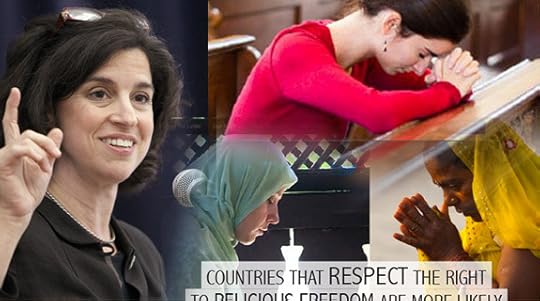
Freedom from Government (Birth) Control | Carrie Gress | Catholic World Report
An interview with Helen Alvaré of Women Speak for Themselves
Washington, DC – More than 40,000 women are putting religious freedom
ahead of the political fiction that says all women want free
contraception, sterilization, and abortifacients.
The group, Women Speak for Themselves,
was founded by Helen Alvaré and Kim Daniels in response to the Health
and Human Services mandate for insurers to provide contraception,
sterilization, and abortifacients at no cost to their clients.
Catholic World Report caught up with Helen Alvaré to find out more about what this growing group of women is doing to fight the HHS mandate.
Alvaré is a professor of law at George Mason University, a consultor to
the Pontifical Council for the Laity, a consultant for ABCNews, and the
chair of the Conscience Protection Task Force at the Witherspoon
Institute. She co-authored and edited the book, Breaking Through: Catholic Women Speak For Themselves.
CWR: What is “Women Speak for Themselves” and how did it come about?
Alvaré: It came about because I was shocked and
dismayed that the news reports about the response to the HHS mandate, as
well as the words out of the mouths of some members of Congress,
claimed that this HHS mandate fight was women vs. men. And bad men,
particularly religious men, hated women and therefore opposed the
mandate. I knew that this was untrue in my own situation and I knew many
women who would feel the same.
The news reports were pouring in on February 16, 2012, and I decided
that I should draft an open letter. I bounced it back and forth with my
good friend Kim Daniels, who is a religious liberty attorney, and we
crafted it and sent it out to a couple of dozen friends and asked for
signatures. This cascade of signatures started to come in so that in
about 48 hours we had about 2,500, and by the end of the week we had
7,500. We hadn’t done any asking beyond that original couple dozen
women, so we knew there was an untapped, unvocalized sentiment out
there. We expressed it in two points: one is that women particularly
care for religious freedom and second, the idea that contraception
equals women’s freedom and trumps religious freedom was simplistic and
wrong.
It has now grown to about 40,000-41,000 women online with whom I
correspond about every three weeks to keep them up-to-date on things
that affect the mandate and religious liberty, but increasingly things
that affect the whole plane that basically says the ability to express
yourself sexually is the biggest part of women’s freedom.
CWR: What is the current situation with the HHS ruling?
Continue reading on the CWR site.
June 29, 2013
Jesus, Marriage, and Homosexuality
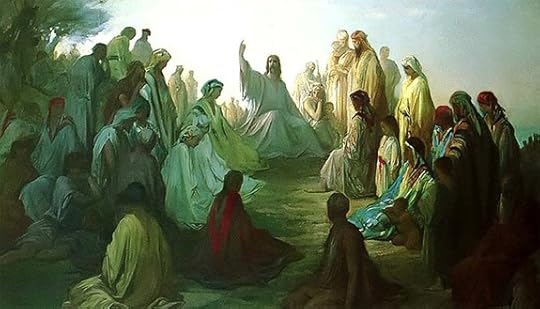
Jesus, Marriage, and Homosexuality | Leroy Huizenga | CWR
The early Christians, following the lead of Jesus, doubled down on traditional Jewish sexual morality.
In the wake of the Supreme Court’s
decisions striking down the substance of the Defense of Marriage Act
(DOMA) and California’s Proposition 8, Jesus’ opinion—or lack
thereof—on homosexuality has received renewed attention. In a crass
fundraising email running the risk of violating the Second
Commandment, Mike Huckabee wrote, “My immediate thoughts on the
SCOTUS ruling that determined that same sex marriage is okay: ‘Jesus
wept,’” while social media ran rampant with memes of Catholic
comedian Stephen Colbert’s words from a show in early May 2012:
“And I right now would like to read to you what the Jesus said
about homosexuality. I’d like to, except he never said anything
about it.”
Colbert’s claim
is common, and it’s effective because it’s true: Jesus did not
directly address the matter. But it does not follow that
Jesus’ words and example have no relevance for marriage, sex, and
family, nor that modern Christians should approve of gay marriage. A
few observations:
First,
Jesus was
a Jew who inherited Jewish Scripture and tradition. Jesus
did not drop out of the sky to bring a brand new set of moral
teachings de
novo. If
he did, perhaps his apparent lack of attention to sex and sexuality
would be striking. But the Jesus of the Gospels—especially Matthew,
the First Gospel in so many significant ways—is a conservative Jew,
as was in all likelihood the so-called historical Jesus behind the
Gospels. And whether we're talking about the historical Jesus or the
Jesus of the Gospels, Jesus stands well within the breadth of Jewish
tradition. Thus, it's not true that things Jesus doesn't spend an
inordinate amount of time on or doesn't mention are unimportant.
Rather, we should assume that those things in Jewish tradition which
Jesus doesn't overturn or reinterpret are assumed. Sure, Jesus
doesn't outright forbid homosexual practices in the Gospels. But he
doesn't have to, because Jesus' Judaism did.
Assuming
that religion is a matter of prohibitions, in debates over sexuality
people often assume that Jesus came simply to forbid
certain behaviors, and if he didn't forbid something, it's therefore
licit. The principle would be "Scripture permits anything not
expressly forbidden." But why assume that hermeneutical posture?
The mission of the prophets and the resolution of the Messiah

A Scriptural Reflection on the Readings for June 30, 2013, the Thirteenth Sunday in
Ordinary Time | Carl E. Olson
Readings:
• 1 Kgs 19:16b, 19-21
• Ps 16:1-2, 5, 7-8, 9-10, 11
• Gal 5:1, 13-18
• Lk 9:51-62
“I’m on my way!” “We’re on
our way!”
These are common enough expressions, and we know
their meaning. They indicate movement, purpose, resolution. We’ve
uttered them many times, with anticipation, or with anxiety.
Jesus, we hear in today’s Gospel
reading, was “on the way.” The days for his “being taken up”
had been fulfilled, and so “he resolutely determined to journey to
Jerusalem.” A more direct translation is that “he hardened his
face to go”. This language is meant to evoke connections with the
prophets, especially Ezekiel: “Son of man, set your face toward
Jerusalem and preach against the sanctuaries; prophesy against the
land of Israel…” (Ezek. 21:2; RSVCE). Jesus sent messengers
ahead, reminiscent of God sending messengers before Moses and the
people (Ex. 23:20).
The journey to Jerusalem was, in other
words, a prophetic mission and the concrete realization of a new
Exodus—not from Egypt, but from sin, death, and separation from
God. Jesus was resolute and unflinching in this decision, by which
“he indicated that he was going up to Jerusalem prepared to die
there” (Catechism of the Catholic Church, par. 557). Some
have suggested or insisted that Jesus, in going to Jerusalem, did not
really know of his approaching death, but was acting with naïve
optimism or blind faith.
However, as we heard last week, Jesus
told his disciples that he would suffer, be rejected by the religious
leaders, killed, and raised on the third day (Lk. 9:22). What the
prophets of the Old Testament sometimes saw in startling glimpses,
Jesus saw with calm clarity: his mission was to liberate mankind from
the slavery of sin and the curse of death by being the sinless,
sacrificial Lamb of God. And as the Holy One journeyed to the holy
city, he encountered rejection, opposition, confusion, and even
fervent promises—the same reactions he still encounters today.
The Samaritans, whose harbored strong
hostility toward the Jews, did not welcome him, apparently because he
journeyed to Jerusalem and not Mount Gerizim, the site of their
temple (cf. Jn. 4:20). Jesus did not fit their concept of a prophet
or messiah, and so they rejected him. Of course, the Pharisees and
scribes also rejected him for the same reason, and the similarities
(and irony) of this fact was likely not lost on St. Luke’s
first-century readers.
Jesus then encountered three men who
got a taste (and give us a clear picture) of the demands of
discipleship. It is easy to say to Jesus, “I will follow you
wherever you go,” but keeping such promises is far more daunting
than making them. Another asked to be given time to first bury his
father; a third wished to first say goodbye to his family.
Was Jesus insensitive to familial
responsibilities and hardships? No, said St. Basil the Great, but “a
person who wishes to become the Lord’s disciple must repudiate a
human obligation, however honorable it may appear, if it slows us
ever so slightly in giving the wholehearted obedience we owe to God.”
Jesus recognized that these men, well intentioned and fervent as they
may have been, were like those who “receive the word with joy, but
they have no root; they believe only for a time and fall away in time
of trial” (Lk. 8:13).
As St. Frances de Sales wrote, in
Treatise on the Love of God, “…we receive the grace of God
in vain, when we receive it at the gate of our heart, and not within
the consent of our heart; for so we receive it without receiving it,
that is, we receive it without fruit, since it is nothing to feel the
inspiration without consenting unto it.” Contrast that with the
newly selected prophet, Elisha. Called by God, he asked permission to
say farewell to his family. Rebuffed by Elijah, he literally
sacrificed his old life, recognizing that following God requires
going all the way.
His actions said, “I’m on the way.”
What do our actions say?
(This "Opening the Word" column originally appeared in the June 27, 2010, issue of Our Sunday Visitor newspaper.)
June 28, 2013
Giving thanks for the separation of Church and State
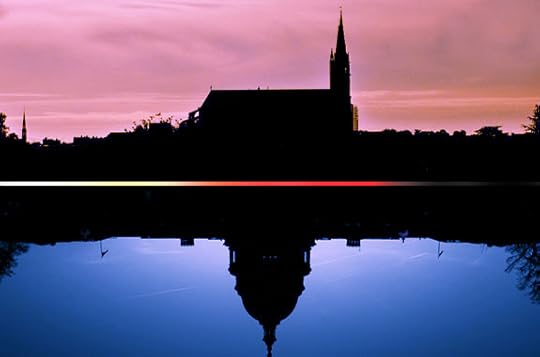
by Russell Shaw | Catholic World Report
In the question period after a talk
I'd given on my new book, American Church, a woman raised an
important point: "If the Church in the U.S. faces as many
problems as you say, why is it doing so much better here than in much
of Europe?"
Great question. My answer--which I
also give in the book--was along these lines.
"It has a lot to do with the
First Amendment principle of separation of Church and State. Yes, I
know--'separation' sometimes is used as a club by secularists who
want to drive religion out of the public square. But on the whole
it's been a great blessing for the Church and for religion in
America.
"For one thing, church-state
separation has generally kept government out of religious affairs,
while also keeping clerics out of inappropriate involvement in
politics. In combination with Cardinal Gibbons' wise decision to
embrace the emerging labor movement in the late 19th century, this
spared the Church the sort of virulent anticlericalism found in
countries like France, Spain, and even 'Catholic' Ireland as a
reaction against the political clericalism of the not so distant
past."
Almost always, I might have added,
clericalism breeds anticlericalism. That we've largely escaped the
worst sort of clericalism in America means we've also been spared the
worst sort of anticlericalism.
But granted all that, the situation of
the Catholic Church in America today is increasingly perilous.
American Church explains why. In brief, the explanation goes
like this.
Carl E. Olson's Blog
- Carl E. Olson's profile
- 20 followers



